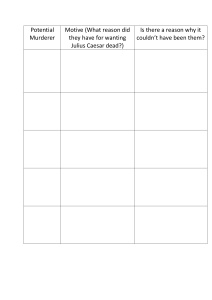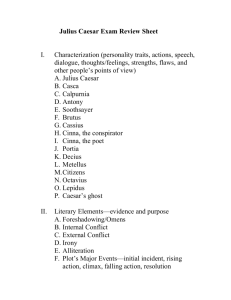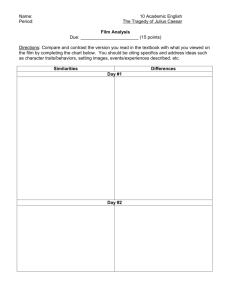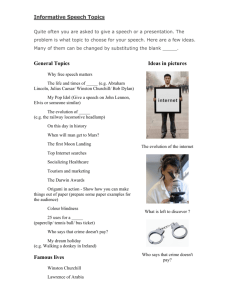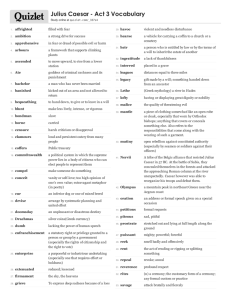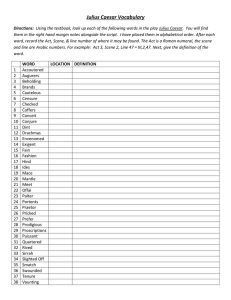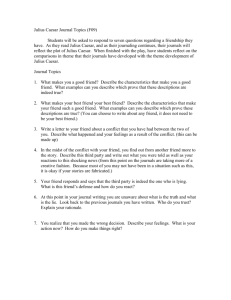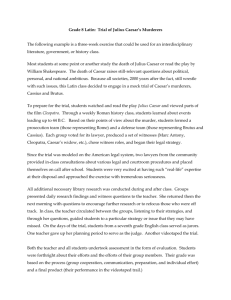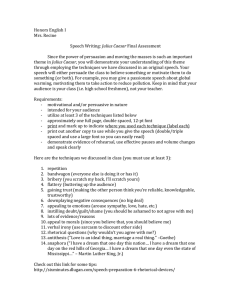Julius Caesar unit
advertisement
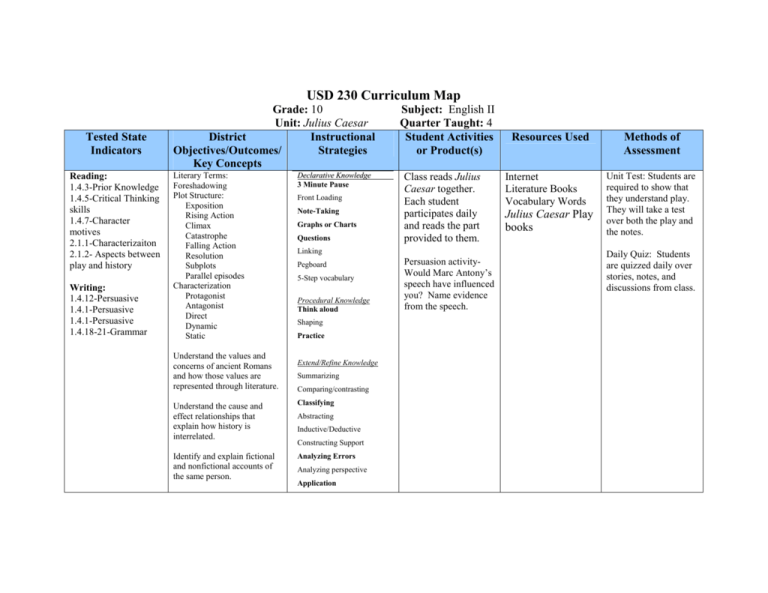
USD 230 Curriculum Map Tested State Indicators Reading: 1.4.3-Prior Knowledge 1.4.5-Critical Thinking skills 1.4.7-Character motives 2.1.1-Characterizaiton 2.1.2- Aspects between play and history Writing: 1.4.12-Persuasive 1.4.1-Persuasive 1.4.1-Persuasive 1.4.18-21-Grammar Grade: 10 Unit: Julius Caesar District Instructional Objectives/Outcomes/ Strategies Key Concepts Literary Terms: Foreshadowing Plot Structure: Exposition Rising Action Climax Catastrophe Falling Action Resolution Subplots Parallel episodes Characterization Protagonist Antagonist Direct Dynamic Static Understand the values and concerns of ancient Romans and how those values are represented through literature. Declarative Knowledge 3 Minute Pause Front Loading Note-Taking Graphs or Charts Questions Subject: English II Quarter Taught: 4 Student Activities or Product(s) Class reads Julius Caesar together. Each student participates daily and reads the part provided to them. Linking Pegboard 5-Step vocabulary Procedural Knowledge Think aloud Shaping Practice Extend/Refine Knowledge Summarizing Comparing/contrasting Understand the cause and effect relationships that explain how history is interrelated. Classifying Identify and explain fictional and nonfictional accounts of the same person. Analyzing Errors Abstracting Inductive/Deductive Constructing Support Analyzing perspective Application Persuasion activityWould Marc Antony’s speech have influenced you? Name evidence from the speech. Resources Used Internet Literature Books Vocabulary Words Julius Caesar Play books Methods of Assessment Unit Test: Students are required to show that they understand play. They will take a test over both the play and the notes. Daily Quiz: Students are quizzed daily over stories, notes, and discussions from class.
